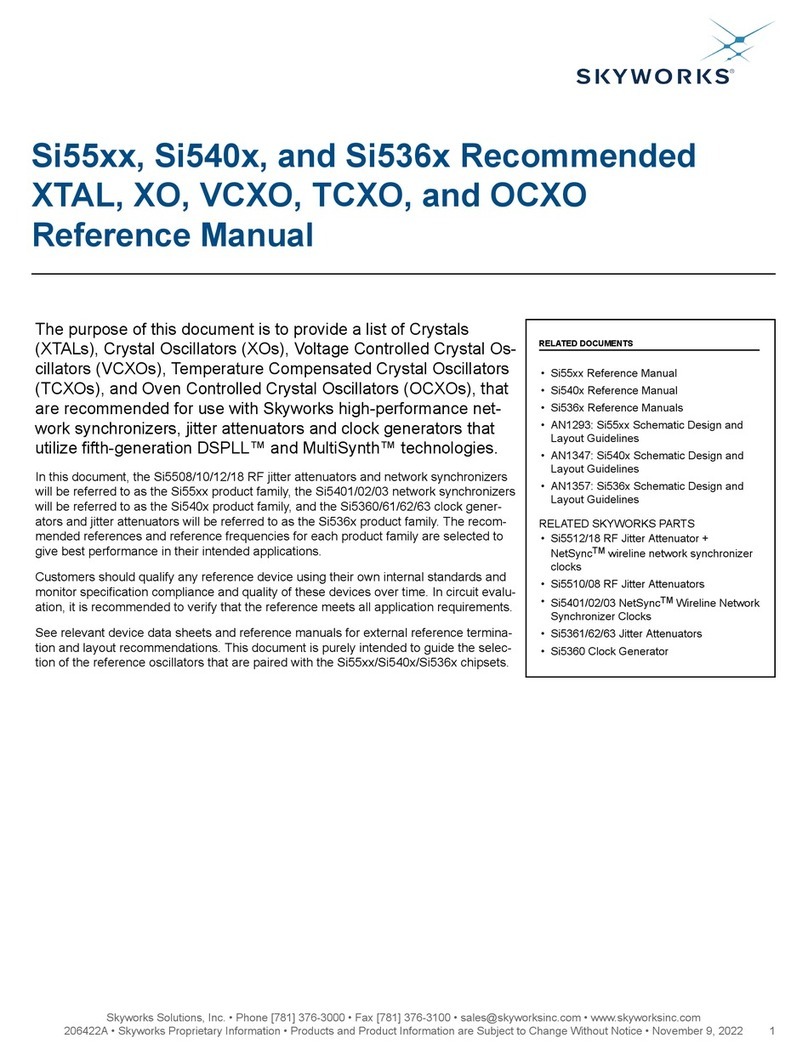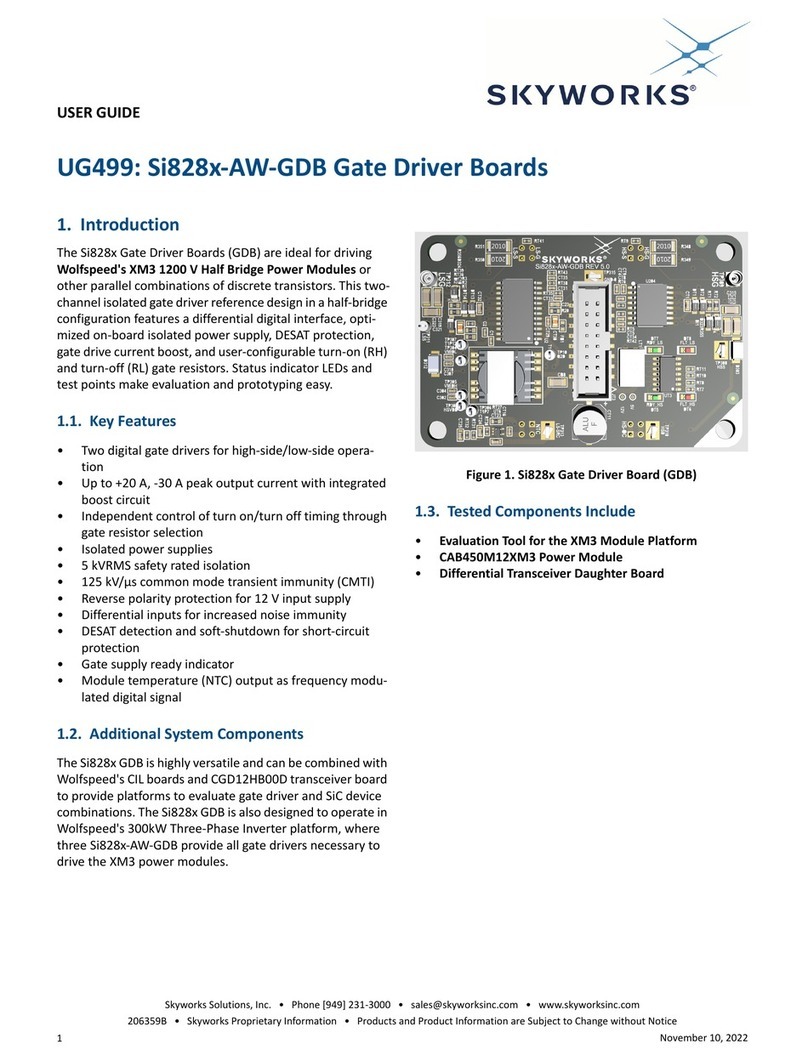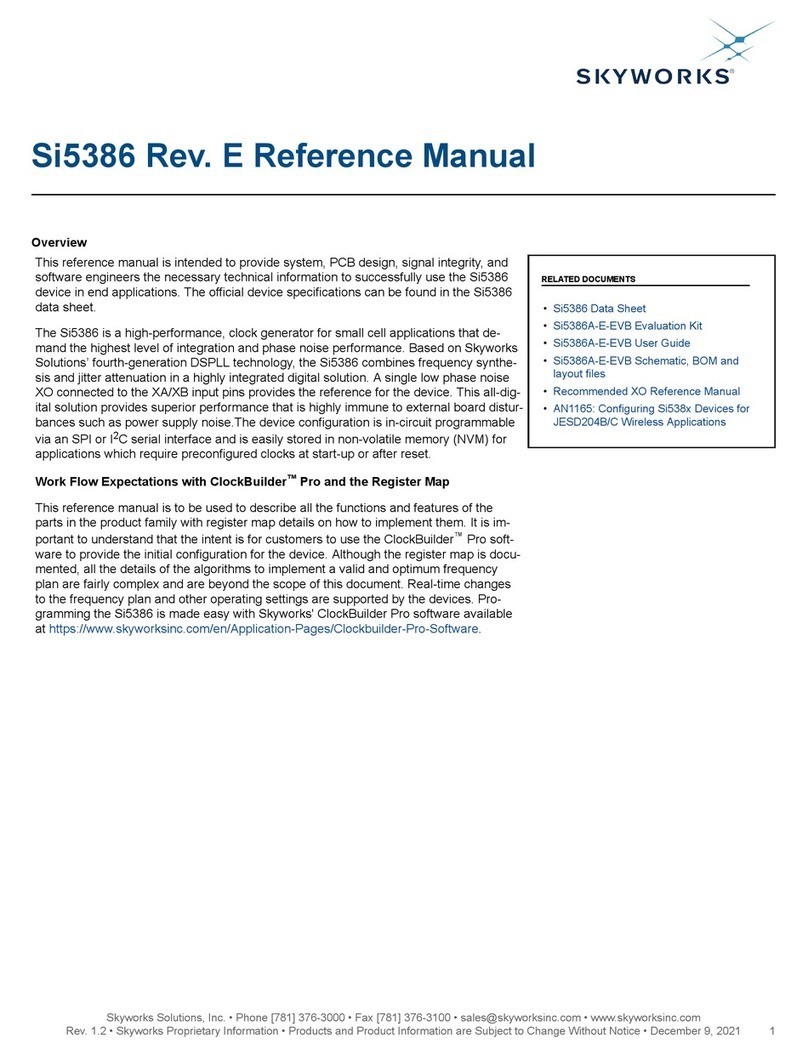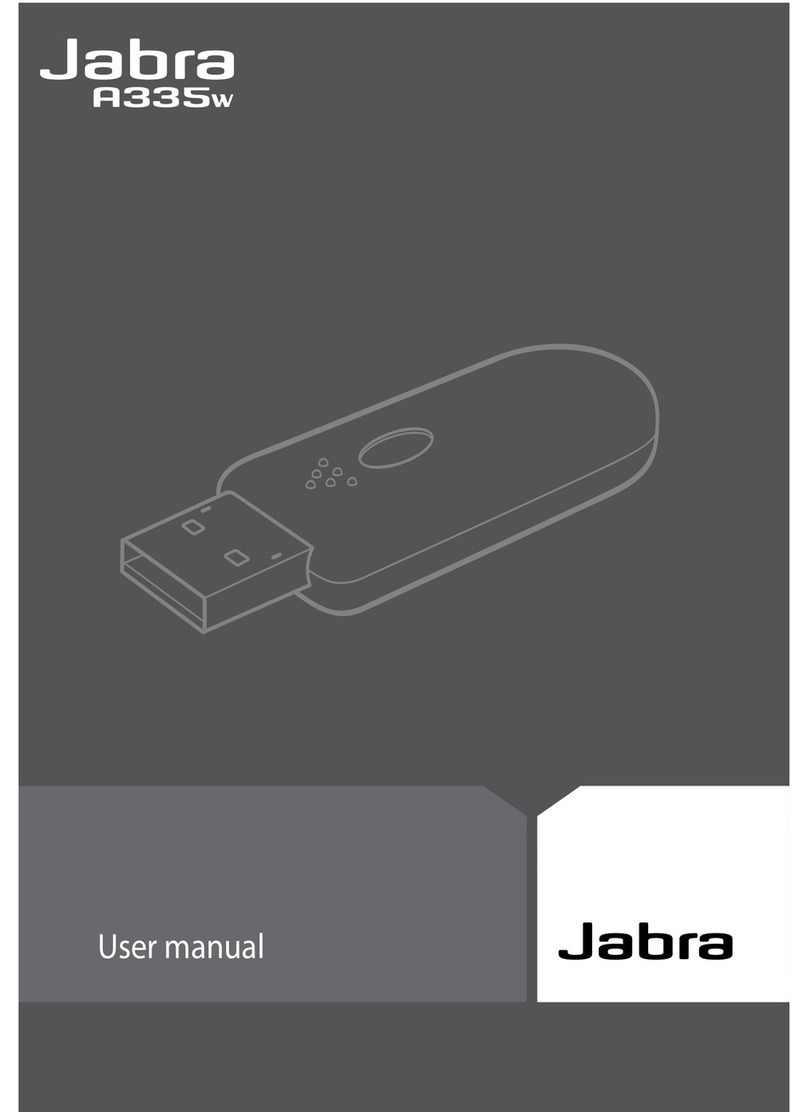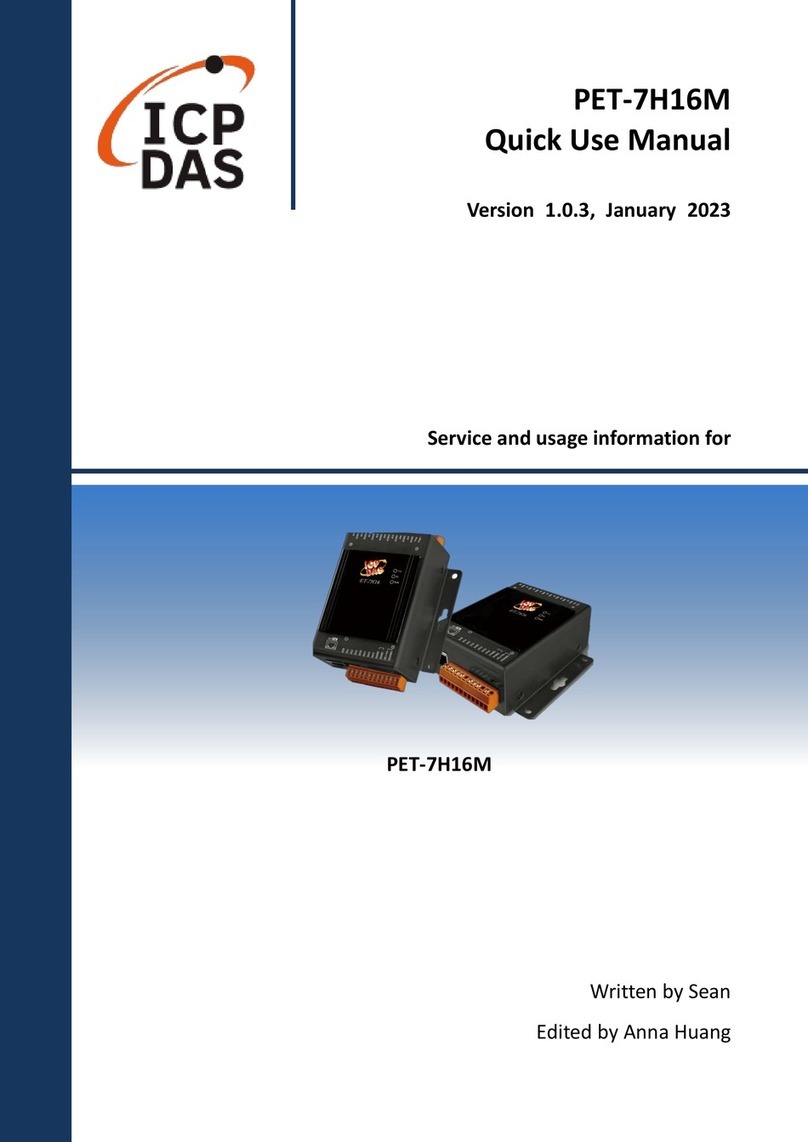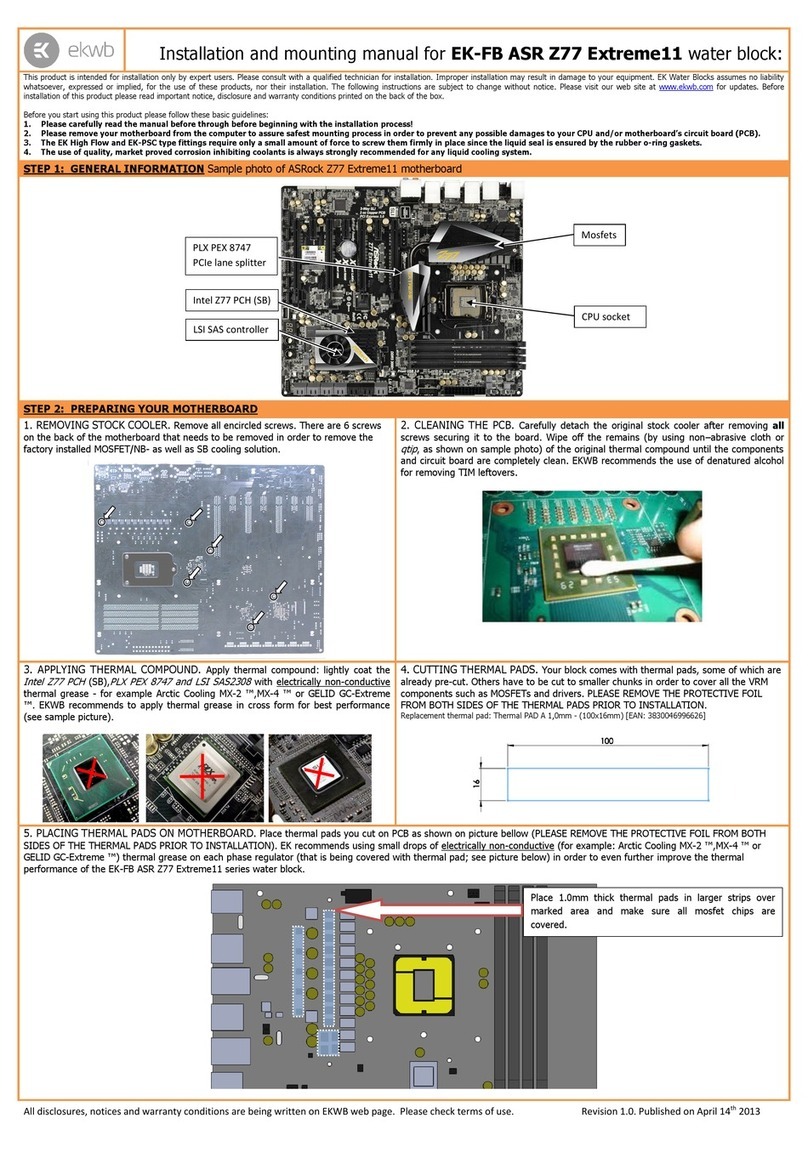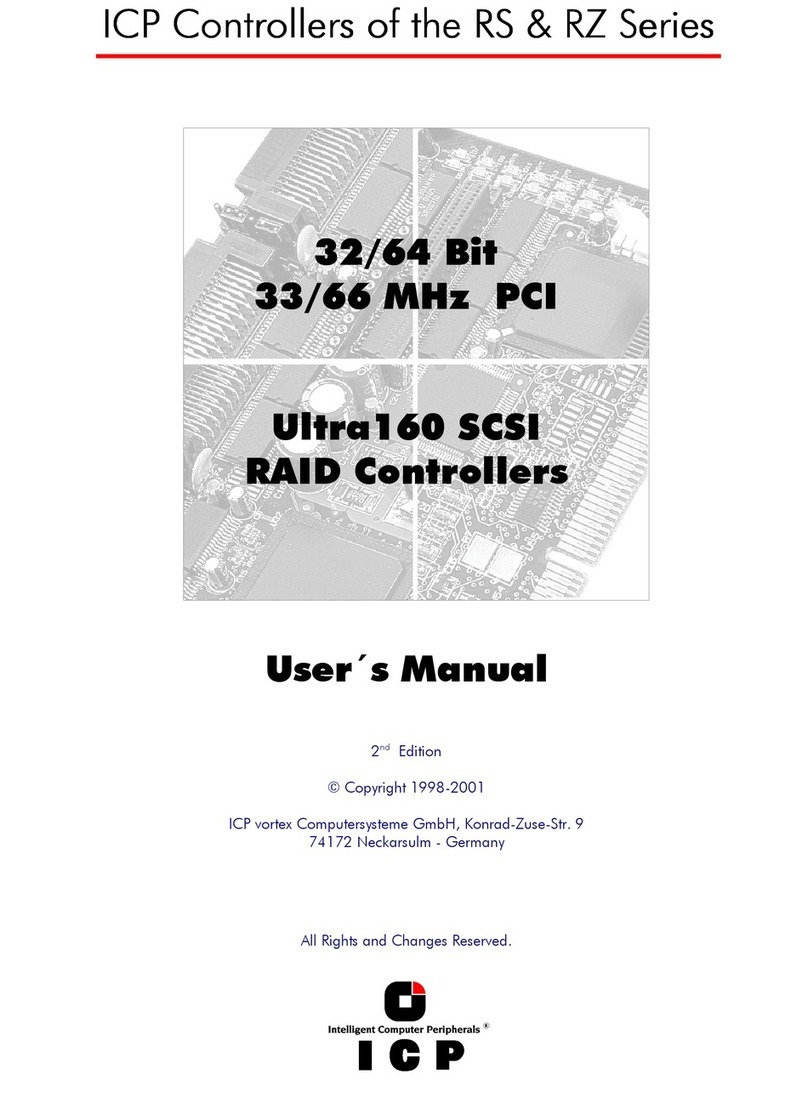Skyworks Si5383 User manual

Si5383/84 Reference Manual
Overview
This Reference Manual is intended to provide system, PCB design, signal integrity,
and software engineers the necessary technical information to successfully use the
Si5383/84 devices in end applications. The official device specifications can be found in
the Si5383/84 data sheet.
The Si5383/84 combines the industry’s smallest footprint and lowest power network
synchronizer clock with unmatched frequency synthesis flexibility and ultra-low jitter.
The three independent DSPLLs are individually configurable as a SyncE PLL or a gener-
al-purpose PLL for processor/FPGA clocking, and support digitally controlled oscillator
(DCO) mode for IEEE 1588 (PTP) clock steering applications. In addition, locking to
a 1 pps input frequency is available on DSPLL D. The DCO mode provides precise
timing adjustment to 1 part per trillion (ppt). The Si5383/84 can also be used in legacy
SETS systems needing Stratum 3/3E compliance. The unique design of the Si5383/84
allows the device to accept a TCXO/OCXO with any frequency, and the reference clock
jitter does not degrade output performance. The Si5383/84 is configurable via a serial
interface with in-circuit programmable non-volatile memory so it always powers up into
a known configuration. Programming the Si5383/84 is easy with ClockBuilder Pro soft-
ware. Factory pre-programmed devices are also available.
RELATED DOCUMENTS
• Si5383/84 Data Sheet
• Si5383/84 Device Errata
• Si5383-EVB User Guide
• Si5383-EVB Schematics, BOM & Layout
• IBIS models
• To download support files, go to:
16. Accessing Design and Support
Collateral
Skyworks Solutions, Inc. • Phone [781] 376-3000 • Fax [781] 376-3100 • [email protected] • www.skyworksinc.com
1Rev. 1.0 • Skyworks Proprietary Information • Products and Product Information are Subject to Change Without Notice • December 9, 2021 1

Table of Contents
1. Scope ..................................5
1.1 Related Documents ............................5
2. Overview .................................6
2.1 Work Flow Using ClockBuilder Pro and the Register Map................6
2.2 Product Family ..............................6
3. Functional Description............................7
3.1 DSPLL.................................8
3.2 DSPLL Loop Bandwidth ...........................8
3.2.1 Fastlock ...............................9
3.2.2 Smartlock Feature ...........................11
3.3 Dividers Overview .............................15
4. Modes of Operation ............................ 16
4.1 Reset and Initialization ...........................17
4.2 Changing Registers while Device in Operation ...................18
4.3 Flash Update/Programming .........................19
4.3.1 Upgrading Flash Firmware Image using Skyworks Tools ..............20
4.3.2 Upgrading Firmware Image Using I2C Master Routine ...............22
4.3.3 Data Sequence to Write File ........................23
4.3.4 ACK Polling or Delay Cycles ........................23
4.3.5 Bootloader Reply Response Codes .....................24
4.4 DSPLL Modes of Operation .........................24
4.4.1 Free Run Mode ............................24
4.4.2 Lock Acquisition Mode ..........................24
4.4.3 Locked Mode .............................24
4.4.4 Holdover Mode ............................25
5. Clock Inputs (IN0, IN1, IN2, IN3, IN4) ...................... 28
5.1 Input Source Selection ...........................29
5.2 Types of Inputs ..............................31
5.2.1 Hitless Input Switching ..........................32
5.2.2 Glitchless Input Switching .........................33
5.2.3 Synchronizing to Gapped Input Clocks ....................33
5.3 Fault Monitoring .............................34
5.3.1 Input LOS Detection...........................34
5.3.2 XA/XB LOS Detection ..........................34
5.3.3 OOF Detection ............................36
5.3.4 LOL Detection (Standard Input Mode) .....................37
5.3.5 LOL Detection in PPS Mode ........................39
5.3.6 LOT Detection in PPS Mode ........................39
5.3.7 Interrupt Pin (INTRb) ..........................40
Skyworks Solutions, Inc. • Phone [781] 376-3000 • Fax [781] 376-3100 • [email protected] • www.skyworksinc.com
2Rev. 1.0 • Skyworks Proprietary Information • Products and Product Information are Subject to Change Without Notice • December 9, 2021 2

6. Output Clocks .............................. 42
6.1 Outputs ................................42
6.1.1 Output Crosspoint ...........................42
6.1.2 Output Terminations ...........................43
6.1.3 Output Divider (R) Synchronization......................43
6.1.4 Support for 1 Hz Output (1PPS) .......................44
6.2 Performance Guidelines for Outputs .......................45
6.2.1 Output Crosspoint and Differential Signal Format Selection .............45
6.3 Differential Outputs ............................46
6.3.1 Differential Output Amplitude Controls.....................46
6.3.2 Differential Output Common Mode Voltage Selection................47
6.3.3 Recommended Settings for Differential LVPECL, LVDS, HCSL, and CML .........48
6.4 LVCMOS Outputs .............................48
6.4.1 LVCMOS Output Terminations .......................49
6.4.2 LVCMOS Output Impedance and Drive Strength Selection ..............49
6.4.3 LVCMOS Output Signal Swing .......................50
6.4.4 LVCMOS Output Polarity .........................50
6.5 Output Enable/Disable ...........................50
6.5.1 Output Disable State Selection .......................51
6.5.2 Output Disable During LOL ........................51
6.5.3 Output Disable During XAXB_LOS ......................51
6.5.4 Output Driver State When Disabled .....................51
6.5.5 Synchronous/Asynchronous Output Selection ..................52
6.5.6 Output Driver Disable Source Summary ....................52
6.5.7 Output Buffer Voltage Selection .......................54
7. Digitally Controlled Oscillator (DCO) Mode ................... 55
7.1 Frequency Increment/Decrement Using Pin Controls .................56
8. Serial Interface.............................. 58
8.1 I2C Interface ...............................59
9. Field Programming ............................ 61
10. Recommended Crystals and External Oscillators ................ 62
10.1 External Reference (XA/XB, REF/REFb) .....................62
10.2 Performance of External References ......................63
10.3 Recommended Crystals ..........................63
10.4 Recommended Oscillators for the Ref / Refb inputs. .................64
10.5 Register Settings to Configure for External XTAL Reference ..............64
10.5.1 XAXB_FREQ_OFFSET Frequency Offset Register ................65
11. Crystal and Device Circuit Layout Recommendations............... 66
11.1 56-Lead LGA Si5383/84 Layout Recommendations .................66
11.1.1 Si5383/84 Crystal Guidelines .......................67
11.1.2 Si5383/84 Output Clocks .........................71
Skyworks Solutions, Inc. • Phone [781] 376-3000 • Fax [781] 376-3100 • [email protected] • www.skyworksinc.com
3Rev. 1.0 • Skyworks Proprietary Information • Products and Product Information are Subject to Change Without Notice • December 9, 2021 3

12. Power Management ........................... 72
12.1 Power Management Features ........................72
12.2 Power Supply Recommendations .......................72
12.3 Power Supply Sequencing .........................72
12.4 Grounding Vias .............................72
13. Base vs. Factory Preprogrammed Devices ................... 73
13.1 "Base" Devices (Also Known as "Blank" Devices) ..................73
13.2 "Factory Preprogrammed" (Custom OPN) Devices .................73
14. Register Map .............................. 74
14.1 Direct Memory Map ............................74
14.2 Indirect Memory Map ...........................77
14.3 Si5383/84 Register Map ..........................78
14.3.1 Page 0 Registers Si5383/84 .......................79
14.3.2 Page 1 Registers Si5383/84 .......................99
14.3.3 Page 2 Registers Si5383/84 ......................105
14.3.4 Page 3 Registers Si5383/84 ......................114
14.3.5 Page 4 Registers Si5383 .......................117
14.3.6 Page 5 Registers Si5383/84 ......................127
14.3.7 Page 6 Registers Si5383........................131
14.3.8 Page 7 Registers Si5383/84 ......................140
14.3.9 Page 9 Registers Si5383/84 ......................150
14.3.10 Page A Registers Si5383/84 ......................151
14.3.11 Page B Registers Si5383/84 ......................152
14.3.12 Page D Registers Si5383/84 ......................154
14.3.13 Page 53 Registers Si5383/84, 1 PPS Mode .................155
14.3.14 Page 53 PPS Loop Registers Si5383/84 ..................157
14.3.15 Page 54 Phase Readout Registers Si5383/84, 1PPS Mode ...........172
15. Custom Differential Amplitude Controls ....................176
16. Accessing Design and Support Collateral ...................177
Skyworks Solutions, Inc. • Phone [781] 376-3000 • Fax [781] 376-3100 • [email protected] • www.skyworksinc.com
4Rev. 1.0 • Skyworks Proprietary Information • Products and Product Information are Subject to Change Without Notice • December 9, 2021 4

1. Scope
This Reference Manual is intended to provide system, PCB design, signal integrity, and software engineers the necessary technical
information to successfully use the Si5383/84 device in end applications. The official device specifications can be found in the
Si5383/84 data sheet.
1.1 Related Documents
• Si5383/84 Data Sheet
• Si5383/84-EVB User Guide
• SiOCXO1-EVB User Guide
Si5383/84 Reference Manual • Scope
Skyworks Solutions, Inc. • Phone [781] 376-3000 • Fax [781] 376-3100 • [email protected] • www.skyworksinc.com
5Rev. 1.0 • Skyworks Proprietary Information • Products and Product Information are Subject to Change Without Notice • December 9, 2021 5

2. Overview
The Si5383/84 is a high performance, jitter attenuating clock multiplier with capabilities to address Telecom Boundary Clock (T-BC),
Synchronous Ethernet (SyncE), IEEE-1588 (PTP) slave clock synchronization, and Stratum 3/3E network synchronization applications.
The Si5383/84 is well suited for both traditional and packet-based network timing solutions. The Si5383/84 contains three independent
DSPLLs allowing for flexible single-chip timing architecture solutions. The Si5383 contains a single DSPLL D that can be configured for
1PPS applications to lock to a 1 Hz input, requiring no additional external circuitry. Each DSPLL contains a digitally controlled oscillator
(DCO) for precise timing for IEEE 1588 (PTP) clock steering applications. The Si5383/84 requires both a crystal and a reference
input. The TCXO/OCXO reference input determines the frequency accuracy in Free Run and stability in Holdover, while the crystal
determines the output jitter performance. The TCXO/OCXO input supports all standard frequencies. Each DSPLL has access to IN0,
IN1, and IN2, which are the three main inputs for synchronizing the DSPLLs. DSPLL D has access to two additional CMOS only inputs,
IN3 and IN4. Each DSPLL can provide low jitter clocks on any of the device outputs. Based on 4th generation DSPLL technology, these
devices provide any-frequency generation. Each DSPLL supports independent free-run and holdover modes of operation, and except
for 1PPS inputs, offers automatic and hitless input clock switching. The Si5383/84 is programmable via a serial I2C interface with
in-circuit programmable non-volatile memory so that it always powers up with a known configuration. Programming the Si5383/84 is
made easy with Skyworks’ ClockBuilder Pro software available at https://www.skyworksinc.com/en/application-pages/clockbuilder-pro-
software. Factory preprogrammed devices are available.
2.1 Work Flow Using ClockBuilder Pro and the Register Map
The purpose of this reference manual is to describe all the functions and features of the devices in the product family with register
map details on how to implement them. Customers should use the ClockBuilder Pro software to provide the initial configuration for the
device. Although the register map is documented, all the details of the algorithms to implement a valid frequency plan are fairly complex
and are beyond the scope of this document. Real-time changes to the frequency plan and other operating settings are supported by
the devices. However, describing all the possible changes is not a primary purpose of this document. Refer to Applications Notes
and Knowledge Base article links within the ClockBuilder Pro GUI for information on how to implement the most common, real-time
frequency plan changes.
The primary purpose of the software is to enable use of the device without an in-depth understanding of its complexities. The software
abstracts the details from the user to allow focus on the high level input and output configuration, making it intuitive to understand and
configure for the end application. The software walks the user through each step, with explanations about each configuration step in the
process to explain the different options available. The software will restrict the user from entering an invalid combination of selections.
The final configuration settings can be saved and written to an EVB, and a custom part number can be created for customers who
prefer to order a factory preprogrammed device. The final register maps can be exported to text files, and comparisons can be done by
viewing the settings in the register map described in this document.
The Si5383 offers three DSPLLs - A,C,D - and the Si5384 offers DSPLLD exclusively. The Reference Manual includes registers for
all DSPLL's however DSPLLA and DSPLLC do not apply to the Si5384. The reference to "Standard Input Mode" applies to input
frequencies between 8 kHz and 750 MHz whereas any reference to "1PPS Mode" applies to a 1 Hz input frequency.
2.2 Product Family
The table below lists a comparison of the various Si5383/84 family members.
Table 2.1. Product Selection Guide
Part Number Max Frequency Package Type RoHS/Lead-Free Temperature Range
Si5383A-Dxxxxx-GM 718.5 MHz 56-Lead 8x8 LGA Yes -40 to 85 °C
S5383B-Dxxxxx-GM 350 MHz 56-Lead 8x8 LGA Yes -40 to 85 °C
Si5384A-Dxxxxx-GM 718.5 MHz 56-Lead 8x8 LGA Yes -40 to 85 °C
Si5384B-Dxxxxx-GM 350 MHz 56-Lead 8x8 LGA Yes -40 to 85 ºC
Si5383-EVB Evaluation Board
SiOCXO1-EVB OCXO Reference Clock
Evaluation Board for
Si5383-EVB (optional)
Si5383/84 Reference Manual • Overview
Skyworks Solutions, Inc. • Phone [781] 376-3000 • Fax [781] 376-3100 • [email protected] • www.skyworksinc.com
6Rev. 1.0 • Skyworks Proprietary Information • Products and Product Information are Subject to Change Without Notice • December 9, 2021 6

3. Functional Description
The Si5383/84 takes advantage of Skyworks' fourth-generation DSPLL technology to offer the industry’s most integrated and flexible
jitter attenuating clock generator solution. The Si5383 offers three DSPLLs and the Si5384 offers one DSPLL. Each of the DSPLLs
operate independently from each other and are controlled through a common serial interface. DSPLLs (A, C, and D) all have access
to any of the three inputs (IN0 to IN2), after having been divided down by the input P dividers, which are either fractional or integer.
DSPLL D has access to two additional CMOS inputs (IN3 and IN4). Clock selection can be either manual or automatic except for 1PPS
inputs which must be controlled by manual clock selection. Any of the output clocks (OUT0 to OUT6) can be configured to connect to
any of the DSPLLs using a flexible crosspoint connection, however 1PPS outputs can only be supplied by OUT5. Both a Crystal and a
Reference must be installed for the device to operate.
Si5383/84
VDD
VDDA
OEb
5MHz – 250MHz
TCXO/OCXO
or REFCLK
FDEC
FINC
REF
REFb
XB
XA
XTAL
OSC
DSPLL_A
LPFPD
f
DCO
DSPLL_C
LPFPD
÷Mn_C
Md_C
f
DCO
IN1
IN1b
IN0
IN0b
IN2
IN2b
÷P0n
P0d
÷P1n
P1d
÷P2n
P2d
LOL_Cb
LOL_Db
INTRb
Status
Monitors
LOL_Ab
RSTb
Output
Crosspoint
A
C
D
A
C
D
A
C
D
A
C
D
A
C
D
OUT0b
OUT0
÷R0
VDDO0
÷R1OUT1b
VDDO1
OUT1
OUT2b
VDDO2
OUT2
÷R2
÷R3OUT3b
VDDO3
OUT3
÷R4OUT4b
VDDO4
OUT4
÷R5OUT5b
VDDO5
OUT5
÷R6OUT6b
VDDO6
OUT6
A
C
D
R6
÷Mn_A
Md_A
IN3
IN4
SDA
SCL I2C
NVM
A
C
D
DSPLL_D
LPFPD
÷Mn_D
Md_D
f
DCO
Si5383
Si5384
A0
A1
BLMDb
LOL_REFb
Figure 3.1. Block Diagram
Si5383/84 Reference Manual • Functional Description
Skyworks Solutions, Inc. • Phone [781] 376-3000 • Fax [781] 376-3100 • [email protected] • www.skyworksinc.com
7Rev. 1.0 • Skyworks Proprietary Information • Products and Product Information are Subject to Change Without Notice • December 9, 2021 7

3.1 DSPLL
The DSPLL is responsible for input frequency translation, jitter attenuation and wander filtering. Fractional input dividers (Pn/Pxd)
allow the DSPLL to perform hitless switching between input clocks (IN0, IN1, IN2) when in standard input mode. Input switching is
controlled manually in 1PPS mode and manuallly or automatically in standard input mode using an internal state machine. Automatic
switching applies to any 4 inputs when in non 1PPS mode. The reference input determines the frequency accuracy while in free-run
and stability while in holdover modes. The external crystal completes the internal oscillator circuit (OSC) which is used by the DSPLL
for intrinsic low-jitter performance. A crosspoint switch connects any of the DSPLLs to any of the outputs. An additional integer divisor
(R) determines the final output frequency.
The frequency configuration of the DSPLL is programmable through the I2C serial interface and can also be stored in non-volatile
memory. The combination of fractional input dividers (Pn/Pd), fractional frequency multiplication (Mn/Md), and integer output division
(Rn) allows the generation of virtually any output frequency on any of the outputs. All divider values for a specific frequency plan are
easily determined by using the ClockBuilder Pro software.
Because a jitter reference is required for all applications, either a crystal or an external clock source needs to be connected to the
XAXB pins. See Chapter 10. Recommended Crystals and External Oscillators and Chapter 11. Crystal and Device Circuit Layout
Recommendations for more information.
3.2 DSPLL Loop Bandwidth
The DSPLL loop bandwidth determines the amount of input clock wander and jitter attenuation. When in standard input mode register
configurable DSPLL loop bandwidth settings from 1 mHz up to 4 kHz are available for selection for each of the DSPLLs and for the
reference DSPLL (DSPLL B). Note that after changing the bandwidth parameters, the appropriate BW_UPDATE_PLLx bit (DSPLL
A = 0x0414, REF B = 0x0514, DSPLL C = 0x0614, DSPLL D = 0x0715) must be set high to latch the new values into operation.
SOFT_RST_PLLx will not update the BW registers so that BW_UPDATE_PLLx should typically be asserted when SOFT_RST_PLLx is
asserted. Note each of these update bits will latch both loop and fastlock bandwidths.
When in 1PPS mode the loop BW selections are 1 mHz and 10 mHz. Since the loop bandwidth is controlled digitally, each of the
DSPLLs will always remain stable with less than 0.1 dB of peaking regardless of the loop bandwidth selection. All changes to PPS BW
settings should take place while PPS mode is disabled, register 0x5320[0].
The higher the PLL bandwidth is set relative to the phase detector frequency (Fpfd), the more chance that Fpfd will cause a spur in the
Phase Noise plot of the output clock and increase the output jitter. To guarantee the best phase noise/jitter, it is recommended that the
normal PLL bandwidth be kept less than Fpfd/160 although ratios of Fpfd/100 will typically work fine.
Table 3.1. DSPLL Loop Bandwidth Registers
Setting Name Hex Address [Bit Field] Function
Si5383/84
BW_PLLA10408[7:0] - 040D[7:0] This group of registers determine the loop
bandwidth for DSPLL A, C, D and B (refer-
ence). They are all independently selecta-
ble in the range from 1 mHz up to 4 kHz.
Register values determined by ClockBuil-
derPro.
BW_PLLC10608[7:0] - 060D[7:0]
BW_PLLD, (Standard Input Mode) 0709[7:0] - 070E[7:0]
BW_PLLB 0508[7:0] - 070E[7:0]
NL_NF, NL_NI, (BW, 1PPS Mode) 0x53D1[3:0], 0x53D2[4:0] DSPLL D has 2 loop BW settings in 1PPS
mode; 1 mHz and 10 mHz.
Note:
1. Si5383 only.
Si5383/84 Reference Manual • Functional Description
Skyworks Solutions, Inc. • Phone [781] 376-3000 • Fax [781] 376-3100 • [email protected] • www.skyworksinc.com
8Rev. 1.0 • Skyworks Proprietary Information • Products and Product Information are Subject to Change Without Notice • December 9, 2021 8

3.2.1 Fastlock
Selecting a low DSPLL loop bandwidth (e.g. 0.1 Hz) will generally lengthen the lock acquisition time. The fastlock feature allows setting
a temporary Fastlock Loop Bandwidth that is used during the lock acquisition process. Higher fastlock loop bandwidth settings will
enable the DSPLLs to lock faster. Fastlock Loop Bandwidth settings in the range from 100 Hz up to 4 kHz are available. Once lock
acquisition has completed, the DSPLL’s loop bandwidth will automatically revert to the DSPLL Loop Bandwidth setting. The fastlock
feature can be enabled or disabled independently for each of the DSPLLs. If enabled, when LOL is asserted, Fastlock is enabled. When
LOL is not asserted, Fastlock is disabled. Note that after changing the bandwidth parameters, the appropriate BW_UPDATE_PLLx bit
(0x0414,0x0514, 0x0614, 0x0715) must be set high to latch the new values into operation. Each of these update bits will latch both loop
and fastlock bandwidths. For 1PPS input applications, a Smartlock feaure is incorporated instead of fastlock.
Table 3.2. Fastlock Registers
Setting Name Hex Address [Bit Field] Function
Si5383/84
FASTLOCK_AUTO_EN_PLLA1042B[0] Auto Fastlock Enable/Disable. Manual
Fastlock must be 0 for this bit to have ef-
fect.
0: Disable Auto Fastlock
1: Enable Auto Fastlock (default)
FASTLOCK_AUTO_EN_PLLC1062B[0]
FASTLOCK_AUTO_EN_PLLD 072C[0]
FASTLOCK_AUTO_EN_PLLB 052B[0]
FAST_BW_PLLA1040E[7:0] - 0413[7:0] Fastlock bandwidth is selectable in the
range of 100 Hz up to 4 kHz. Register val-
ues determined using ClockBuilder Pro.
FAST_BW_PLLC1060E[7:0] - 0613[7:0]
FAST_BW_PLLD 070F[7:0] - 0714[7:0]
FAST_BW_PLLB 050E[7:0] - 0513[7:0] The reference fastlock bandwidth is select-
able in the range of 1mHz to 4kHz
FASTLOCK_EXTEND_EN_PLL(A,B,C,D) 0x00E5[4:7] Enables FASTLOCK_EXTEND
FASTLOCK_EXTEND_PLLA1
FASTLOCK_EXTEND_PLLB
FASTLOCK_EXTEND_PLLC1
FASTLOCK_EXTEND_PLLD
[ 0x00E9[4:0] 0x00E8[7:0] 0x00E7[7:0]
0x00E6[7:0] ]
[ 0x00ED[4:0] 0x00EC[7:0] 0x00EB[7:0]
0x00EA[7:0] ]
[ 0x00F1[4:0] 0x00F0[7:0] 0x00EF[7:0]
0x00EE[7:0] ]
[ 0x00F5[4:0] 0x00F4[7:0] 0x00F3[7:0]
0x00F2[7:0] ]
Set by CBPro to minimize phase transients
when switching the PLL bandwidth
FASTLOCK_EXTEND_SCL_PLLA1
FASTLOCK_EXTEND_SCL_PLLB
FASTLOCK_EXTEND_SCL_PLLC1
FASTLOCK_EXTEND_SCL_PLLD
0x0294[3:0]
0x0294[7:4]
0x0295[3:0]
0x0295[7:4]
Set by CBPro
HOLDEXIT_BW_SEL0 0x059B[6] Set by CBPro
HOLDEXIT_BW_SEL1 0x052C[4] Set by CBPro
LOL_SLW_VALWIN_SELX_PLL(A,B,C,D) 0x0296[3:0] Set by CBPro,
FASTLOCK_DLY_ONSW_PLLA1
FASTLOCK_DLY_ONSW_PLLB
FASTLOCK_DLY_ONSW_PLLC1
FASTLOCK_DLY_ONSW_PLLD
0x02A6[19:0]
0x02A9[19:0]
0x02AC[19:0]
0x02AF[19:0]
Set by CBPro
Si5383/84 Reference Manual • Functional Description
Skyworks Solutions, Inc. • Phone [781] 376-3000 • Fax [781] 376-3100 • [email protected] • www.skyworksinc.com
9Rev. 1.0 • Skyworks Proprietary Information • Products and Product Information are Subject to Change Without Notice • December 9, 2021 9

Setting Name Hex Address [Bit Field] Function
Si5383/84
FASTLOCK_DLY_ON-
LOL_EN_PLL(A,B,C,D)
0x0299[3:0] Set by CBPro
FASTLOCK_DLY_ONLOLA1
FASTLOCK_DLY_ONLOLB
FASTLOCK_DLY_ONLOLC1
FASTLOCK_DLY_ONLOLD
0x029A[19:0]
0x029D[19:0]
0x02A0[19:0]
0x02A3[19:0]
Set by CBPro
Note:
1. Si5383 only.
Si5383/84 Reference Manual • Functional Description
Skyworks Solutions, Inc. • Phone [781] 376-3000 • Fax [781] 376-3100 • [email protected] • www.skyworksinc.com
10 Rev. 1.0 • Skyworks Proprietary Information • Products and Product Information are Subject to Change Without Notice • December 9, 2021 10

3.2.2 Smartlock Feature
When operating in 1PPS input mode, the Si5383/84 offers the Smartlock feature to achieve fast locking to 1PPS inputs. The Smartlock
feature locks to 1PPS inputs in two phases. During the first phase, large adjustments are made to eliminate the majority of the
frequency and phase error. During the second phase, finer adjustments are made until the PLL is locked. Once the PLL is locked, the
DSPLLs loop bandwidth will automatically revert to the DSPLL loop bandwidth setting.
Table 3.3. Smartlock Registers
Setting Name Hex Address [Bit Field] Function
INIT_ACQ_TYPE 0x5320[4] Initial Acquisition Lock B Disable - When
set, acquisition doesn't wait for DSPLLB to
lock before proceeding. Must be set before
PPS_EN.
DCO_SCALE 0x5358[2:0] DCO Scaling Factor -Used to keep DCO
tuning range relatively constant over all fre-
quency plans. Must be set before PPS_EN.
PP_CW_LMT 0x535C[7:0] - 0x535F[7:0] Phase Pull Control Word Limit - - Maximum
CW value to ensure DCO doesn't exceed
maximum operating frequency (Fvco/10).
Must be set before PPS_EN.
PD_ADJ 0x5360[7:0]-0x5363[7:0] Phase Detector Adjustment - a 2's comple-
ment number used to modify DSPLLD out-
puts phase when in 1PPS mode. This is
used to statically zero out or adjust the
phase, such as compensating for fixed sys-
tem delays. Must be set before PPS_EN.
PD_CW_2_ADJ 0x5364[7:0]-0x5367[7:0] Phase Detector Control Word to Adjust-
ment Conversion - Factor to convert the
DCO Control Word to a PD adjustment.
Must be set before PPS_EN.
SL_PER_2_ADJ 0x5368[7:0]-0x536B[7:0] SmartLock Period to Adjustment Conver-
sion - Factor to convert measured period
difference to a DCO adjustment. Must be
set before PPS_EN.
SL_PE_2_ADJ 0x536C[7:0]-0x536F[7:0] SmartLock Phase Error to Adjustment Con-
version - Factor to convert measured phase
error to a DCO adjustment that achieves
zero phase error in one second. Must be
set before PPS_EN.
SLA_FA_CNT 0x5371[7:0] SmartLock Frequency Average Count - The
number of cycles to average the frequency
difference before attempting frequency pull.
Must be set before PPS_EN.
SLA_FP_NCYC 0x5372[2:0] SmartLock Frequency Pull Cycles - The
number of cycles (2^N) to complete fre-
quency pull. Must be set before PPS_EN.
SLA_FP_VAL_CNT 0x5373[7:0] SmartLock Frequency Pull Cycles - The
number of consecutive cycles with fre-
quency error below the threshold to com-
plete frequency pull. Must be set before
PPS_EN.
Si5383/84 Reference Manual • Functional Description
Skyworks Solutions, Inc. • Phone [781] 376-3000 • Fax [781] 376-3100 • [email protected] • www.skyworksinc.com
11 Rev. 1.0 • Skyworks Proprietary Information • Products and Product Information are Subject to Change Without Notice • December 9, 2021 11

Setting Name Hex Address [Bit Field] Function
SLA_FE_THR 0x5374[6:0]-0x5377[7:0] SmartLock Frequency Error Threshold -
Threshold specified as the maximum dif-
ference in period between the reference
and feedback clocks. Must be set before
PPS_EN.
SLA_PPn_NCYC 0x5378[4:0]-0x537F[4:0] SmartLock Phase Pull Cycles - The num-
ber of cycles (2^N) to complete phase pull.
Must be set before PPS_EN.
SLA_PE_THR 0x5380[5:0]-0x5383[7:0] SmartLock Frequency Error Threshold -
Threshold specified as the maximum dif-
ference in phase between the reference
and feedback clocks. Must be set before
PPS_EN.
SLA_RL1_NF 0x5384[3:0] SmartLock RapidLock NF, sets the loop
BW. Must be set before PPS_EN.
SLA_RL1_NI 0x5385[4:0] SmartLock RapidLock NI, sets the loop
BW. Must be set before PPS_EN.
SLA_RL1_CNT 0x5386[7:0] - 0x5387[7:0] SmartLock RapidLock Count - The number
of cycles to remain in the RapidLock state.
Must be set before PPS_EN.
SLA_RL2_NF 0x5388[3:0] SmartLock RapidLock NF, sets the loop
BW. Must be set before PPS_EN.
SLA_RL2_NI 0x5389[4:0] SmartLock RapidLock, sets the loop BW.
Must be set before PPS_EN.
SLA_RL2_CNT 0x538A[7:0] - 0x538B[7:0] SmartLock RapidLock Count - The number
of cycles to remain in the RapidLock state.
Must be set before PPS_EN.
SLA_RL3_NF 0x538C[3:0] SmartLock RapidLock NF, sets the loop
BW. Must be set before PPS_EN.
SLA_RL3_NI 0x538D[4:0] SmartLock RapidLock NI, sets the loop
BW. Must be set before PPS_EN.
SLA_RL3_CNT 0x538E[7:0] - 0x538F[7:0] SmartLock RapidLock Count - The number
of cycles to remain in the RapidLock state.
Must be set before PPS_EN.
SLA_RL4_NF 0x5390[3:0] Smartlock RapidLock NF, sets the loop BW.
Must be set before PPS_EN
SLA_RL4_NI 0x5391[4:0] SmartLock RapidLock NI, sets the loop
BW. Must be set before PPS_EN
SLA_RL4_CNT 0x5392[7:0] - 0x5393[7:0] SmartLock RapidLock Count - he number
of cycles to remain in RapidLock state.
Must be set before PPS_EN.
SLB_FA_CNT 0x53A1[7:0] SmartLock Frequency Average Count - The
number of cycles to average the frequency
difference before attempting frequency pull.
Must be set before PPS_EN.
SLB_FP_NCYC 0x53A2[2:0] SmartLock Frequency Pull Cycles - The
number of cycles (2^N) to complete fre-
quency pull. Must be set before PPS_EN.
Si5383/84 Reference Manual • Functional Description
Skyworks Solutions, Inc. • Phone [781] 376-3000 • Fax [781] 376-3100 • [email protected] • www.skyworksinc.com
12 Rev. 1.0 • Skyworks Proprietary Information • Products and Product Information are Subject to Change Without Notice • December 9, 2021 12

Setting Name Hex Address [Bit Field] Function
SLB_FP_VAL_CNT 0x53A3[7:0] SmartLock Frequency Validation Count. -
The number of consecutive cycles with fre-
quency error below the threshold to com-
plete frequency pull. Must be set before
PPS_EN.
SLB_FE_THR 0x53A4[6:0]-0x53A7[7:0] SmartLock Frequency Error Threshold.
Threshold specified as the maximum dif-
ference in period between the reference
and feedback clocks. Must be set before
PPS_EN.
SLB_PPn_NCYC 0x53A8[4:0]-0x53AF[4:0] SmartLock Phase Pull Cycles - The num-
ber of cycles (2^N) to complete phase pull.
Must be set before PPS_EN.
SLB_PE_THR 0x53B0[5:0]-0x53B3[7:0] SmartLock Phase Error Threshold -
Threshold specified as the maximum dif-
ference in phase between the reference
and feedback clocks. Must be set before
PPS_EN.
SLB_RL1_NF 0x53B4[3:0] SmartLock RapidLock NF, sets the loop
BW. Must be set before PPS_EN.
SLB_RL1_NI 0x53B5[4:0] SmartLock RapidLock NI, sets the loop
BW. Must be set before PPS_EN.
SLB_RL1_CNT 0x53B6[7:0] - 0x53B7[7:0] SmartLock RapidLock Count - The number
of cycles to remain in the RapidLock state.
Must be set before PPS_EN.
SLB_RL2_NF 0x53B8[3:0] SmartLock RapidLock NF, sets the loop
BW. Must be set before PPS_EN.
SLB_RL2_NI 0x53B9[4:0] SmartLock RapidLock NI, sets the loop
BW. Must be set before PPS_EN.
SLB_RL2_CNT 0x53BA[7:0] - 0x53BB[7:0] SmartLock RapidLock Count - The number
of cycles to remain in the RapidLock state.
Must be set before PPS_EN.
SLB_RL3_NF 0x53BC[3:0] SmartLock RapidLock NF, sets the loop
BW. Must be set before PPS_EN.
SLB_RL3_NI 0x53BD[4:0] SmartLock RapidLock NI, sets the loop
BW. Must be set before PPS_EN.
SLB_RL3_CNT 0x53BE[7:0] - 0x53BF[7:0] SmartLock RapidLock Count - The number
of cycles to remain in the RapidLock state.
Must be set before PPS_EN.
SLB_RL4_NF 0x53C0[3:0] SmartLock Rapid LockNF, sets the loop
BW. Must be set before PPS_EN
SLB_RL4_NI 0x53C1[4:0] SmartLock Rapid LockNF, sets the loop
BW. Must be set before PPS_EN
SLB_RL4_CNT 0x53C2[7:0]-0x53C3[7:0] SmartLock Rapid Count - The number of
cycles to remain in RapidLock state. Must
be set beore PPS_EN.
NL_NF 0x53D1[3:0] NormalLock NF - Feed forward coefficient
used in NormalLock mode. Must be set be-
fore PPS_EN.
Si5383/84 Reference Manual • Functional Description
Skyworks Solutions, Inc. • Phone [781] 376-3000 • Fax [781] 376-3100 • [email protected] • www.skyworksinc.com
13 Rev. 1.0 • Skyworks Proprietary Information • Products and Product Information are Subject to Change Without Notice • December 9, 2021 13

Setting Name Hex Address [Bit Field] Function
NL_NI 0x53D2[4:0] NormalLock NI - Integrating coefficient
used in NormalLock mode. Must be set be-
fore PPS_EN.
HO_EXIT_EN 0x53E0[0]] Holdover Acquisition Type - When enabled,
HOLDOVER will automatically exit and at-
tempt reacquisition when a valid input is
detected. When disabled, FORCE_HOLD
will be set on entry into holdover and must
be manually cleared to exit the holdover
state. Must be set before PPS_EN.
FORCE_HOLD 0x53E0[1] Holdover Force - When asserted, the PPS
loop will transition from the FREERUN or
LOCKED states to the HOLDOVER state.
It will remain in this state until the force is
removed.
HO_ACQ_TYPE 0x53E0[5:4] Holldover Acquisition Type - Determines
the acquisition mode when holdover is exi-
ted. Must be set before PPS_EN.
HOLD_HIST_LEN 0x53E1[2:0] Holdover History Length - Specifies the
holdover window size. Larger windows pro-
vide more averaging. Must be set before
PPS_EN.
HOLD_HIST_DELAY 0x53E2[4:0] Holdover History Lengthy - Specifies the
holdover delay time. Delay value allows ig-
noring corrupt frequency data before the
input clock failure. Must be set before
PPS_EN.
Si5383/84 Reference Manual • Functional Description
Skyworks Solutions, Inc. • Phone [781] 376-3000 • Fax [781] 376-3100 • [email protected] • www.skyworksinc.com
14 Rev. 1.0 • Skyworks Proprietary Information • Products and Product Information are Subject to Change Without Notice • December 9, 2021 14

3.3 Dividers Overview
The frequency configuration for each of the DSPLLs is programmable through the I2C interface and can also be stored in non-volatile
memory. The combination of fractional input dividers (Pn/Pd), fractional frequency multiplication (Mn/Md), and integer output division
(Rn) allows each of the DSPLLs (A,C,D) to lock to any input frequency and generate virtually any output frequency. All divider values for
a specific frequency plan are easily determined using the ClockBuilder Pro utility.
There are five main divider classes within the Si5383/84. See Chapter 3. Functional Description for a block diagram that shows them.
Additionally, the DCO step word is used to scale the nominal output frequency in DCO mode. See Chapter 7. Digitally Controlled
Oscillator (DCO) Mode for more information and block diagrams on DCO mode.
• PXAXB: XAXB Crystal / Reference input divider (0x0206)
• XAXB Divide clock by 1, 2, 4, or 8 to obtain an internal clock <= 54 MHz
• P0-P3: Input clock wide range dividers (0x0208-0x022F)
• Integer or Fractional divide values
•Min. value is 1, Max. value is 224 (Fractional-P divisors must be > 5)
• 48-bit numerator, 32-bit denominator
• Practical P divider range of (Fin/2 MHz) < P < (Fin/8 kHz)
• Each P divider has a separate update bit for the new divider value to take effect
• MA-MD: DSPLL feedback dividers (0x0415-0x041F, 0x0515-0x051F, 0x0615-0x061F, 0x0716-0x0720))
• Integer or Fractional divide values
•Min. value is 1, Max. value is 224
• 56-bit numerator, 32-bit denominator
• Practical M divider range of (Fdco/2 MHz) < M < (Fdco/8 kHz)
• Each M divider has a separate update bit for the new divider value to take effect
• Soft reset will also update M divider values
• FSTEPW: DSPLL DCO step words (0x0423-0x0429, 0x0623-0x0629, 0x0724-0x072A)
• Positive Integers, where FINC/FDEC select direction
•Min. value is 0, Max. value is 224
• 56-bit step size, relative to 32-bit M numerator
• R0-R6: Output dividers (0x0250-0x026A)
• Even integer divide values: 2, 4, 6, etc.
•Min. value is 2, Max. value is 224
• 24-bit word where Value = 2 x (Word + 1), for example Word=3 gives an R value of 8
Si5383/84 Reference Manual • Functional Description
Skyworks Solutions, Inc. • Phone [781] 376-3000 • Fax [781] 376-3100 • [email protected] • www.skyworksinc.com
15 Rev. 1.0 • Skyworks Proprietary Information • Products and Product Information are Subject to Change Without Notice • December 9, 2021 15

4. Modes of Operation
Once initialization is complete, each of the DSPLLs operates independently in one of four modes: Free-run mode, Lock Acquisition
Mode, Locked Mode, or Holdover Mode. A state diagram showing the modes of operation is shown in the figure below. The following
sections describe each of these modes in greater detail.
No valid input
clocks selected
Lock Acquisition
(Fast Lock or
Smart Lock)
Locked
Mode
Holdover
Mode
Phase lock on
selected input
clock is achieved
An input is
qualified and
available for
selection
No valid input
clocks available
for selection
Free-run
Valid input clock
selected
Reset and
Initialization
Power-Up
Selected input clock fails
(Standard input mode)
Yes
No
Holdover
History
Valid?
Other Valid
Clock Inputs
Available?
No
Yes
Input Clock
Switch
Holdover
Mode (1 PPS)
Selected input
clock fails (1 PPS
input mode)
An input is
qualified and
available for
selection
No valid input
clocks available
for selection
Figure 4.1. Modes of Operation
Si5383/84 Reference Manual • Modes of Operation
Skyworks Solutions, Inc. • Phone [781] 376-3000 • Fax [781] 376-3100 • [email protected] • www.skyworksinc.com
16 Rev. 1.0 • Skyworks Proprietary Information • Products and Product Information are Subject to Change Without Notice • December 9, 2021 16

4.1 Reset and Initialization
Once power is applied, the device begins an initialization period where it downloads default register values and configuration data
from NVM and performs other initialization tasks. Communicating with the device through the serial interface is possible once this
initialization period is complete. No clocks will be generated until the initialization is complete. It is recommended that the device be
held in reset on power-up by asserting the RSTb pin. RSTb should be released once all supplies have reached operational levels. Note,
RSTb also functions as an open-drain output and drives low during POR. External devices must be configured as open-drain to avoid
contention.
There are two types of resets available. A hard reset is functionally similar to a device power-up. All registers will be restored to the
values stored in NVM, and all circuits will be restored to their initial state including the serial interface. A hard reset is initiated using the
RSTb pin or by asserting the hard reset bit. A soft reset bypasses the NVM download. It is simply used to initiate register configuration
changes. A hard reset affects all DSPLLs, while a soft reset can affect all or each DSPLL individually.
Table 4.1. Reset Control Registers
Setting Name Hex Address [Bit Field] Function
Si5383/84
HARD_RST 5303[0] Performs the same function as power cy-
cling the device. All registers will be re-
stored to their default values.
SOFT_RST_ALL 001C[0] Resets the device without re-downloading
the register configuration from NVM.
SOFT_RST_PLLA1001C[1] Performs a soft reset on DSPLL A only.
SOFT_RST_PLLB 001C[2] Performs a soft reset on DSPLL B, affect-
ing all PLLs.
SOFT_RST_PLLC1001C[3] Performs a soft reset on DSPLL C only.
SOFT_RST_PLLD 001C[4] Performs a soft reset on DSPLL D only.
Note:
1. Si5383 only.
Power-Up
Serial interface
ready
RSTb
pin asserted
Hard Reset
bit asserted
Initialization
NVM download
Soft Reset
bit asserted
Figure 4.2. Initialization from Hard Reset and Soft Reset
The Si5383/84 is fully configurable using the serial interface (I2C). At power-up the device downloads its default register values from
internal non-volatile memory (NVM). Application specific default configurations can be written into flash memory allowing the device
to generate specific clock frequencies at power-up. Writing default values to the flash memory is in-circuit programmable with normal
operating power supply voltages applied to its VDD (1.8 V) and VDDA (3.3 V) pins. VDDOx supply is not required to write the flash
memory.
Si5383/84 Reference Manual • Modes of Operation
Skyworks Solutions, Inc. • Phone [781] 376-3000 • Fax [781] 376-3100 • [email protected] • www.skyworksinc.com
17 Rev. 1.0 • Skyworks Proprietary Information • Products and Product Information are Subject to Change Without Notice • December 9, 2021 17

4.2 Changing Registers while Device in Operation
ClockBuilder Pro generates all necessary control register writes for the entire device, including the ones described below. This is the
case for both “Export” generated files as well as when using the GUI. This is sufficient to cover most applications. However, in some
applications it is desirable to modify only certain sections of the device while maintaining unaffected clocks on the remaining outputs. If
this is the case, please contact Skyworks Technical Support for further information: https://www.skyworksinc.com/support-ia .
If certain registers are changed while the device is in operation, it is possible for the PLL to become unresponsive (i.e. lose lock
indefinitely). The following are the affected registers:
Table 4.2. Registers Affecting PLL Lock Status
Control Register(s)
XAXB_FREQ_OFFSET 0x0202 – 0x0205
PXAXB 0x0206[1:0]
MXAXB_NUM 0x0235 – 0x023A
MXAXB_DEN 0x023B – 0x023E
The issue can easily be avoided by using the following preamble and post-amble write sequence below when one of these registers is
modified or large frequency steps are made. ClockBuilder Pro software adds these writes to the output file by default when Exporting
Register Files. Preamble and post-amble writes should be included when writing upon initilization, power-up, hard reset and RSTb.
1. To start, write the preamble by updating the following Write sequences:
Table 4.3. Preamble Sequence
Register Value
0x0B24 0xC0
0x0B25 0x04
0x0540 0x01
2. Disable 1PPS mode, if used, by writing a 0 to register 5320[0].
3. Wait 300 ms.
4. Then modify all desired control registers.
5. Write 0x01 to Register 0x001C (SOFT_RST_ALL) to perform a Soft Reset once modifications are complete.
6. Write the post-amble by updating the following Write sequences:
Table 4.4. Postamble Sequence
Register Value
0x0540 0x00
0x0B24 0xC3
0x0B25 0x06
7. Enable 1PPS mode, if used, by writing a 1 to register 5320[1]
Note, however, that this procedure affects all DSPLLs and outputs on the device. For assistance in changing only certain portions of the
device without affecting the other outputs while the device is operating, please contact Skyworks technical support using the link on the
last page of this document.
Si5383/84 Reference Manual • Modes of Operation
Skyworks Solutions, Inc. • Phone [781] 376-3000 • Fax [781] 376-3100 • [email protected] • www.skyworksinc.com
18 Rev. 1.0 • Skyworks Proprietary Information • Products and Product Information are Subject to Change Without Notice • December 9, 2021 18

4.3 Flash Update/Programming
CBPro software is used to generate desired project files which include input/output frequency selection, output logic formats, loop BW
values and a variety of associated PLL controls and alarm settings. The CBPro project file and Si5383 EVB can be tested to verify the
Si5383/84 works as intended in the application.
Once complete, there are a variety of files which can be saved using the Export command and includes the Firmware Image, Register
File, Settings File, Multi-Project Register Settings and RegMap. The Firmware Image should be saved in Boot Record or Stand Alone
mode, the most common method would be Boot Record, and in either Intel hex or Binary format. From this, the hex or binary file
is loaded into the Si5383/slave to update a frequency plan and firmware update, by using an I2C master. The I2C master is either
Skyworks supported - by using the Si5383 EVB or Field Programmer - or by the users I2C master.
Si5383/84 Reference Manual • Modes of Operation
Skyworks Solutions, Inc. • Phone [781] 376-3000 • Fax [781] 376-3100 • [email protected] • www.skyworksinc.com
19 Rev. 1.0 • Skyworks Proprietary Information • Products and Product Information are Subject to Change Without Notice • December 9, 2021 19

4.3.1 Upgrading Flash Firmware Image using Skyworks Tools
A Firmware Image can be written to an Si5383, on an Si5383 EVB, or by using a CBPROG-Dongle and Si538x4x-56SKT-DK / socket
board hardware (ClockBuilder Pro Field Programmer)with CBPro software or CLI commands. Once a frequency plan has been built
and verified, the required Firmware Image should be saved by selecting “Export” then “Firmware Image.” Select “Boot Record” or
“Standalone,” and then either “Intel Hex” or “Binary” format. Additionally, Register File, Settings File, RegMap and MultiProject Register
Settings, if applicable, can be saved in the Si5383 Export GUIs, as well as saving the Project File and design report (text) in the
ClockBuilderPro GUI .
Once the Firmware Image has been saved it can be downloaded to devices by either using CBPro or CLI commands. If using CBPro,
open the EVB GUI and select “File “and “Flash Firmware on Device” and locate where the file is located, plus whether it’s a bootloader
or a standalone file, then select “Download Firmware”. The Si5383 will now be loaded with a new Firmware Image.
Si5383/84 Reference Manual • Modes of Operation
Skyworks Solutions, Inc. • Phone [781] 376-3000 • Fax [781] 376-3100 • [email protected] • www.skyworksinc.com
20 Rev. 1.0 • Skyworks Proprietary Information • Products and Product Information are Subject to Change Without Notice • December 9, 2021 20
This manual suits for next models
1
Table of contents
Other Skyworks Computer Hardware manuals
Popular Computer Hardware manuals by other brands
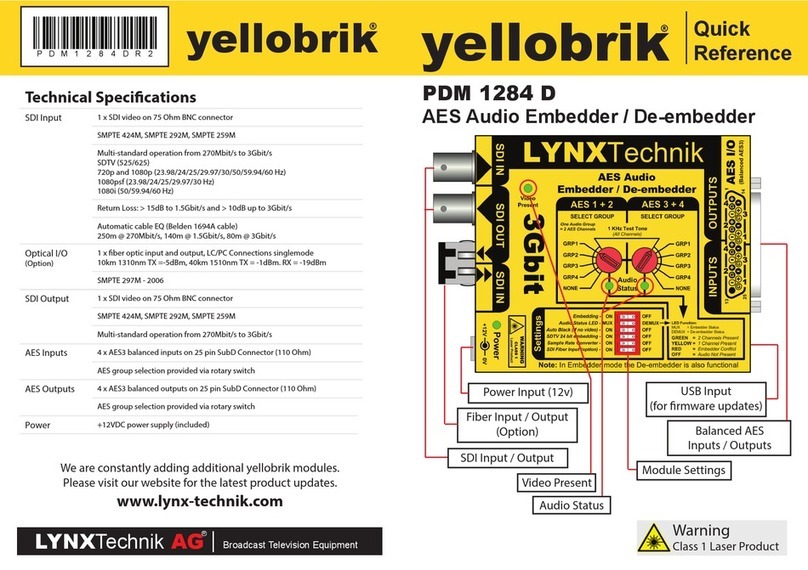
LYNXTechnik
LYNXTechnik Yellobrik PDM 1284 D quick reference
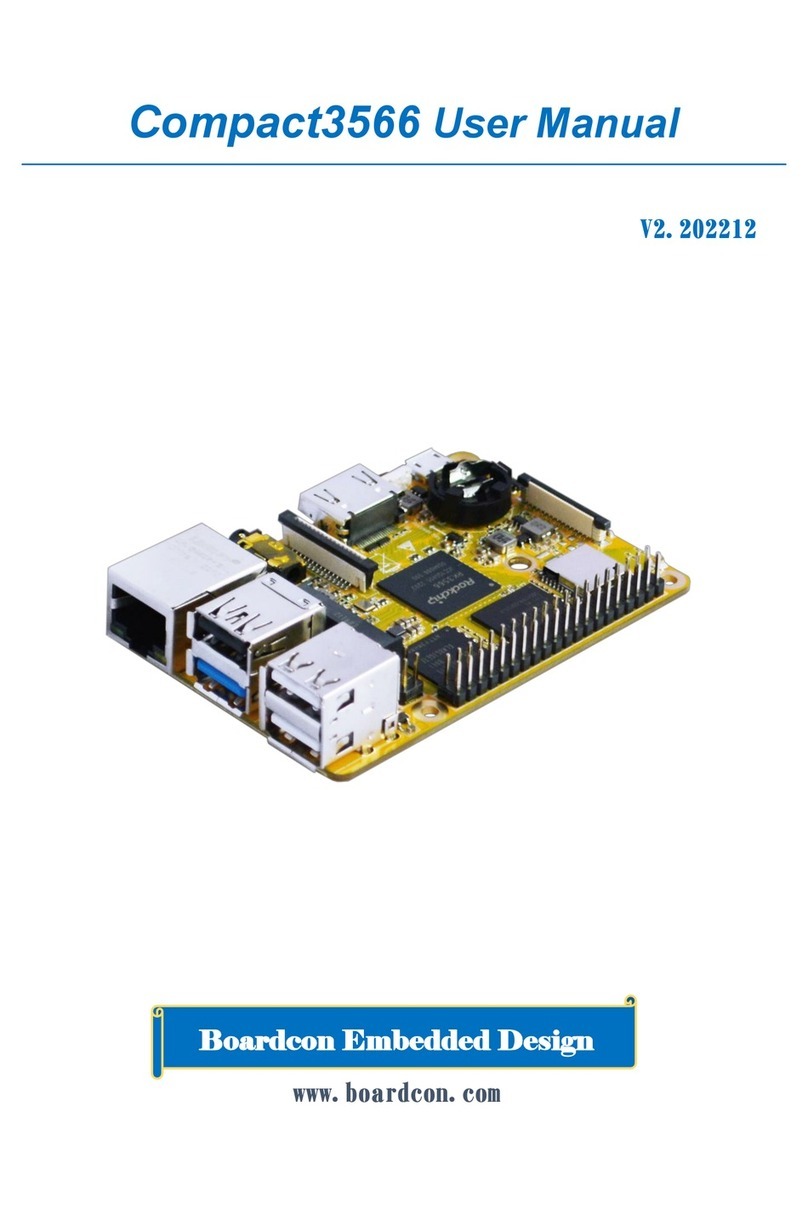
Boardcon Embedded Design
Boardcon Embedded Design Compact3566 user manual
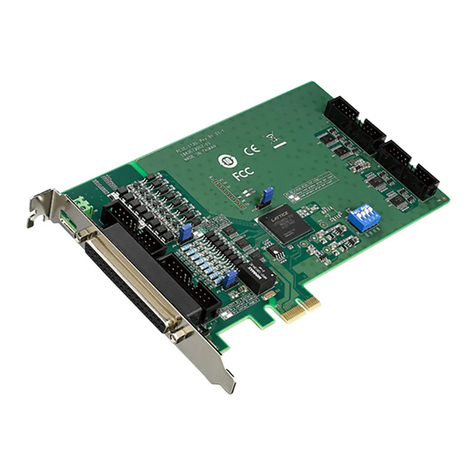
Advantech
Advantech PCIE-1730H user manual
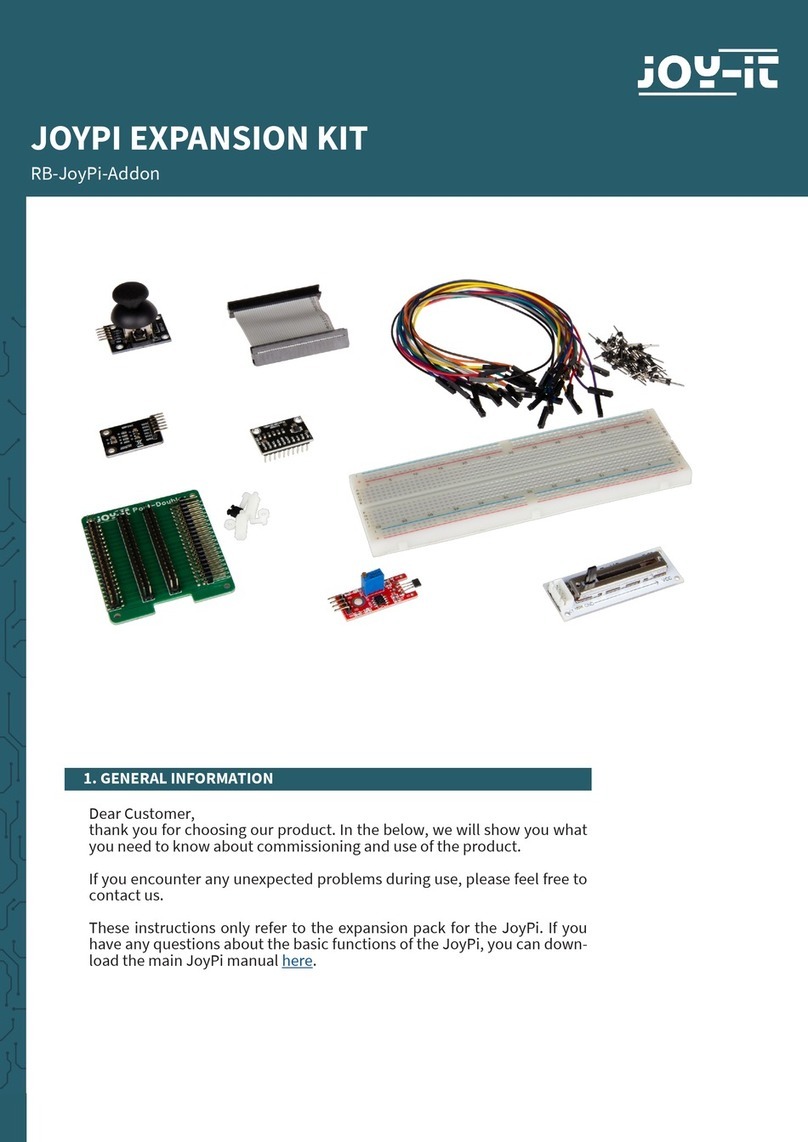
Joy-it
Joy-it RB-JoyPi-Addon manual

EK-Quantum
EK-Quantum Momentum2 ROG Strix X570-i Gaming D-RGB quick start guide

Asus
Asus AAEON NanoCOM-WHU user manual
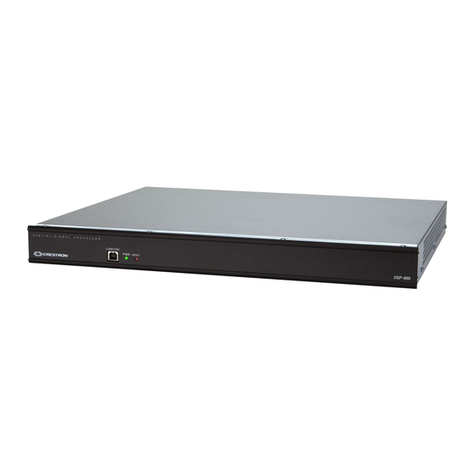
Crestron
Crestron DSP-860 Do guide

Fujimoto
Fujimoto CP51 instruction manual
Cypress Semiconductor
Cypress Semiconductor FLEx36 CYD01S36V Specification sheet
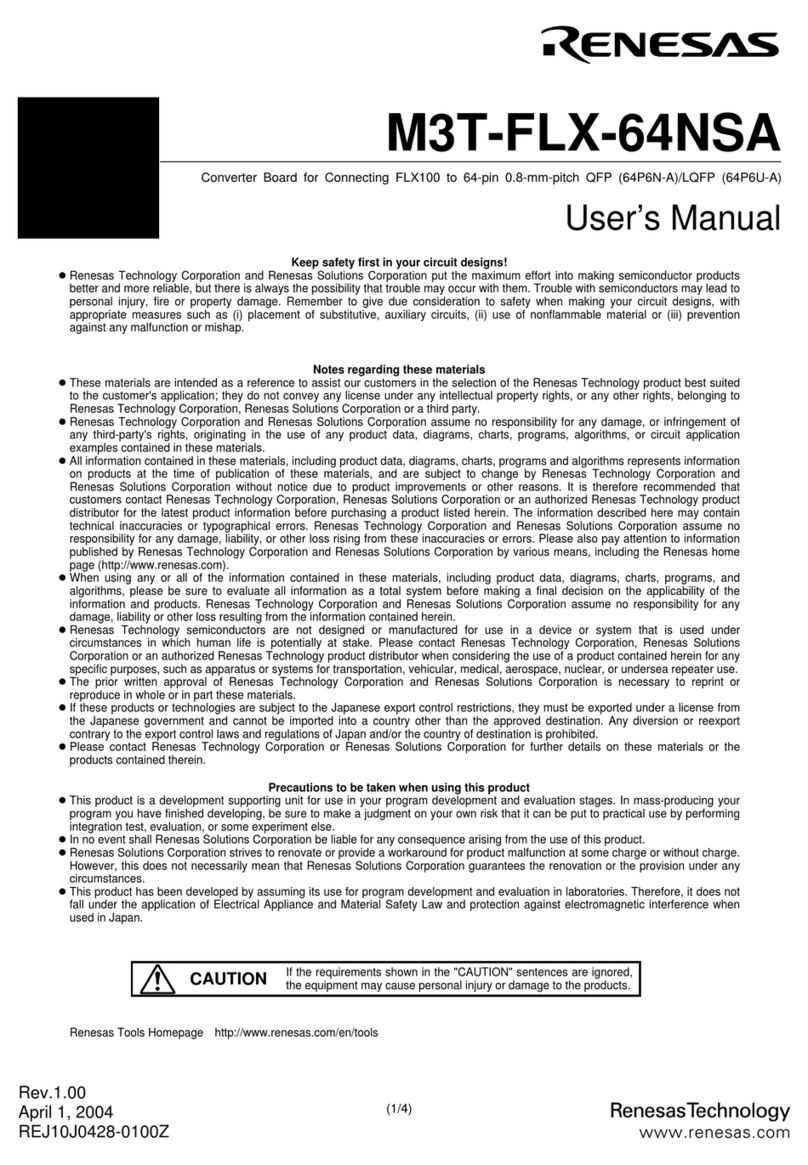
Renesas
Renesas M3T-FLX-64NSA user manual
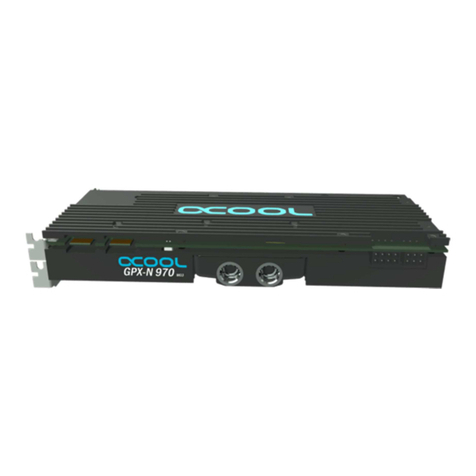
Alphacool
Alphacool NexXxoS GPX-N 970 M03 instruction manual
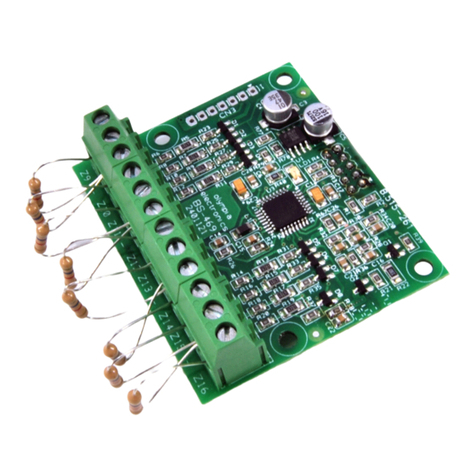
Olimpia electronics
Olimpia electronics BS-469 manual


